Kelp Forests and Climate Change: Marine Permaculture Guide

TL;DR: Mycelium packaging grows from agricultural waste in days, decomposes in weeks, and is already shipping in Dell computers and IKEA furniture—proving fungi can replace foam.
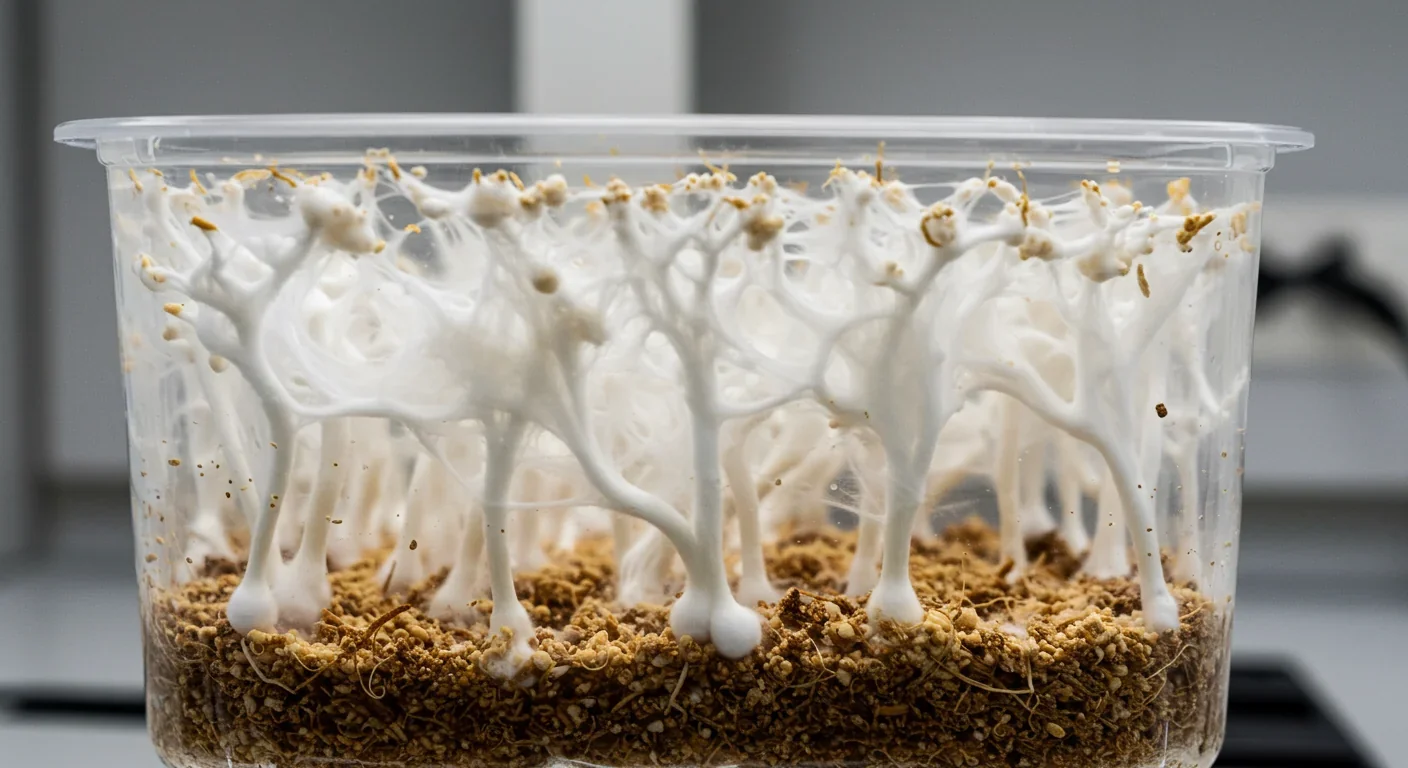
By 2030, you might tear open your latest online purchase and discover the cushioning around it isn't foam at all. It's fungus. And instead of tossing it into a landfill where it'll sit for centuries, you can throw it in your backyard, where it'll vanish within weeks while feeding your soil. That transformation is already underway, driven by a material that sounds like science fiction but grows in farmers' warehouses right now.
Mycelium packaging isn't a new invention dreamed up last year. It's the result of a decades-long effort to harness one of nature's most efficient decomposers. Mycelium, the vegetative root structure of mushrooms, consists of microscopic threads called hyphae that spread through organic matter, secreting enzymes to break down everything from dead leaves to agricultural waste. What researchers discovered is that these hyphae can also bind materials together with surprising strength.
The process works like this: manufacturers mix fungal spores with agricultural byproducts such as hemp stalks, corn husks, or sawdust. The mycelium grows rapidly through this substrate over five to ten days, creating a dense network that glues the particles into a solid composite material. Once the desired shape forms inside a mold, producers heat-treat the material to halt growth, leaving behind a lightweight, rigid structure that can protect shipped goods just as well as polystyrene foam.
Unlike conventional packaging, which requires petroleum extraction, chemical processing, and energy-intensive manufacturing, mycelium composites grow themselves. The fungi consume the substrate's carbohydrates for energy, meaning no external fuel is needed during production. Recent studies show that less than five percent fungal biomass by mass can create stable composites when the right species pairs with the right substrate, a threshold that makes scaling economically feasible.
The journey from academic research to commercial product began in earnest when Ecovative Design, a New York-based company founded in 2007, patented methods for growing mycelium packaging. Their MyoComposite line became the first commercially viable fungus-based packaging, and it didn't take long for major brands to notice.
Dell started using mycelium cushions to ship servers in 2011, replacing polystyrene foam in thousands of units. IKEA followed suit, partnering with Ecovative to develop mushroom-based packaging for furniture and other products. Sealed Air, the company behind Bubble Wrap, explored mycelium alternatives as consumer demand for sustainable options grew. These weren't small pilot programs. They represented millions of packages entering the supply chain annually.
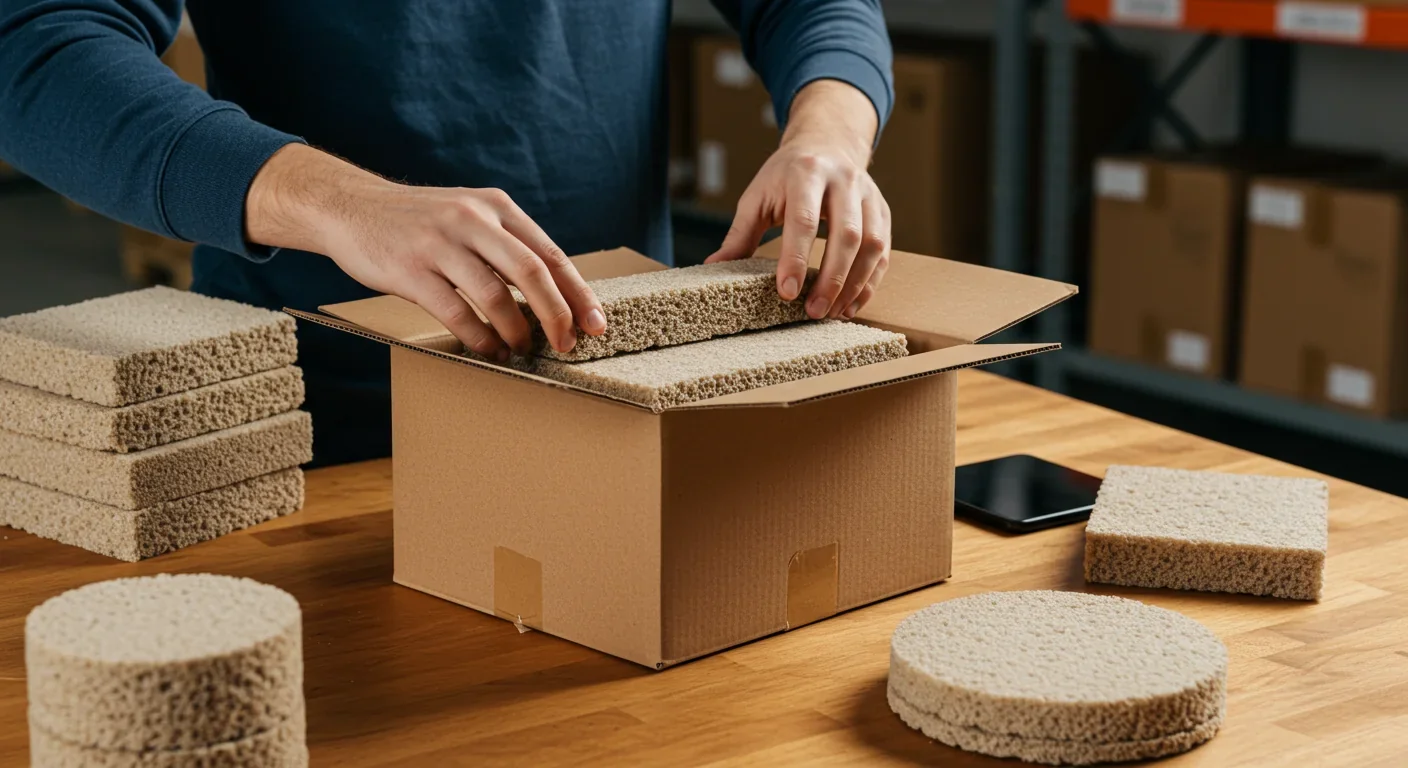
What enabled this transition was the material's versatility. Mycelium packaging can be molded into virtually any shape, from simple cushions to complex contours that fit electronics, glassware, or delicate instruments. Its mechanical properties, once considered inferior to synthetic foams, improved through selective breeding of fungal strains and optimization of substrate composition. Research on twenty different fungus-substrate combinations revealed that species-specific adaptations allow manufacturers to tune strength, density, and flexibility for different applications.
The shift also benefited from infrastructure that already existed. Ecovative partners with local farmers who grow the composites in regional facilities, then ship the finished packaging to brands. This distributed model reduces transportation emissions and creates economic opportunities in rural areas, a side benefit that policymakers find attractive.
To understand why mycelium works so well, you need to zoom in to the cellular level. Fungal hyphae are incredibly thin, typically just a few micrometers in diameter, but they branch and fuse continuously as they grow. This creates a three-dimensional network that physically interlocks substrate particles. The cell walls of hyphae contain chitin, the same tough polymer found in insect exoskeletons, giving the network tensile strength. Some species also secrete adhesive proteins that further bind the composite.
Different fungal species produce different hyphal architectures. Monomitic species have a single type of hyphae, creating uniform but relatively soft materials. Dimitic and trimitic species produce multiple hyphal types, some thick-walled and supportive, others thin and connective, which results in composites with higher compression resistance. By selecting the right species for the job, manufacturers can engineer materials that rival or exceed the performance of traditional foams.
Substrate choice matters just as much. Hemp hurd, the woody core of hemp stalks, provides a fibrous matrix with good structural integrity. Sawdust offers fine particles that pack densely. Spent brewer's grains, leftover from beer production, contain residual sugars that accelerate mycelial growth. Researchers have tested everything from coffee grounds to rice hulls, discovering that high water content substrates promote aerial mycelium formation, which improves composite stability.
The growth phase itself requires precise control. Temperature typically ranges from 25 to 30 degrees Celsius, with humidity between 70 and 80 percent. Too dry, and the mycelium struggles to colonize the substrate. Too wet, and contamination from unwanted molds becomes a problem. Quality control relies on quantitative PCR techniques that measure fungal DNA concentration, ensuring consistent biomass levels across production batches.
Once growth completes, the composite undergoes dehydration or baking. This step stops the fungus from continuing to spread and locks the structure in place. Some producers use vacuum lyophilization to preserve the material's microstructure, while others oven-dry at lower temperatures to reduce energy costs. The result is a stable product that won't decompose during storage or shipping but will break down rapidly when exposed to soil microbes.
The most compelling argument for mycelium packaging is its end-of-life behavior. Polystyrene foam, commonly called Styrofoam, takes at least 500 years to decompose in a landfill, and even then it merely fragments into microplastics that persist indefinitely. Mycelium composites, by contrast, decompose within weeks when placed in soil or compost. The material acts as a nutrient source, enriching rather than contaminating the environment.
Lifecycle assessments comparing mycelium packaging to conventional alternatives reveal significant advantages. During production, mycelium absorbs carbon dioxide as it grows, making the process carbon-negative before accounting for energy inputs. Manufacturing polystyrene, on the other hand, releases greenhouse gases at every stage, from petroleum refining to polymerization to expansion with blowing agents.
Energy consumption tells a similar story. Producing one kilogram of polystyrene foam requires roughly 117 megajoules of energy, most of it from fossil fuels. Mycelium packaging uses far less because the fungus does the work of assembly. The only significant energy inputs occur during substrate preparation and final heat treatment, which can be powered by renewable sources.
Water use also favors mycelium. Mushroom farming, the agricultural process most analogous to mycelium production, is remarkably water-efficient. Fungi recycle moisture within their substrate, and modern growing facilities capture and reuse water from humidity control systems. Plastic production, meanwhile, consumes vast quantities of water for cooling and processing.
Waste diversion represents another environmental win. The agricultural byproducts used as substrates would otherwise be composted, burned, or landfilled. Spent brewer's grains alone generate millions of tons of waste annually. Turning them into packaging closes a loop, transforming a disposal problem into a resource stream. When the packaging completes its service life, it returns to the soil, completing a true circular economy.
Not everyone is convinced the environmental case is airtight. Critics point out that lifecycle assessments often exclude certain factors, such as the energy required to transport bulky substrates or the emissions from shipping finished packaging over long distances. One analysis suggested that mycelium's carbon footprint may be comparatively better than polystyrene, but "comparatively better" isn't the same as carbon-neutral. As production scales, these nuances will matter.
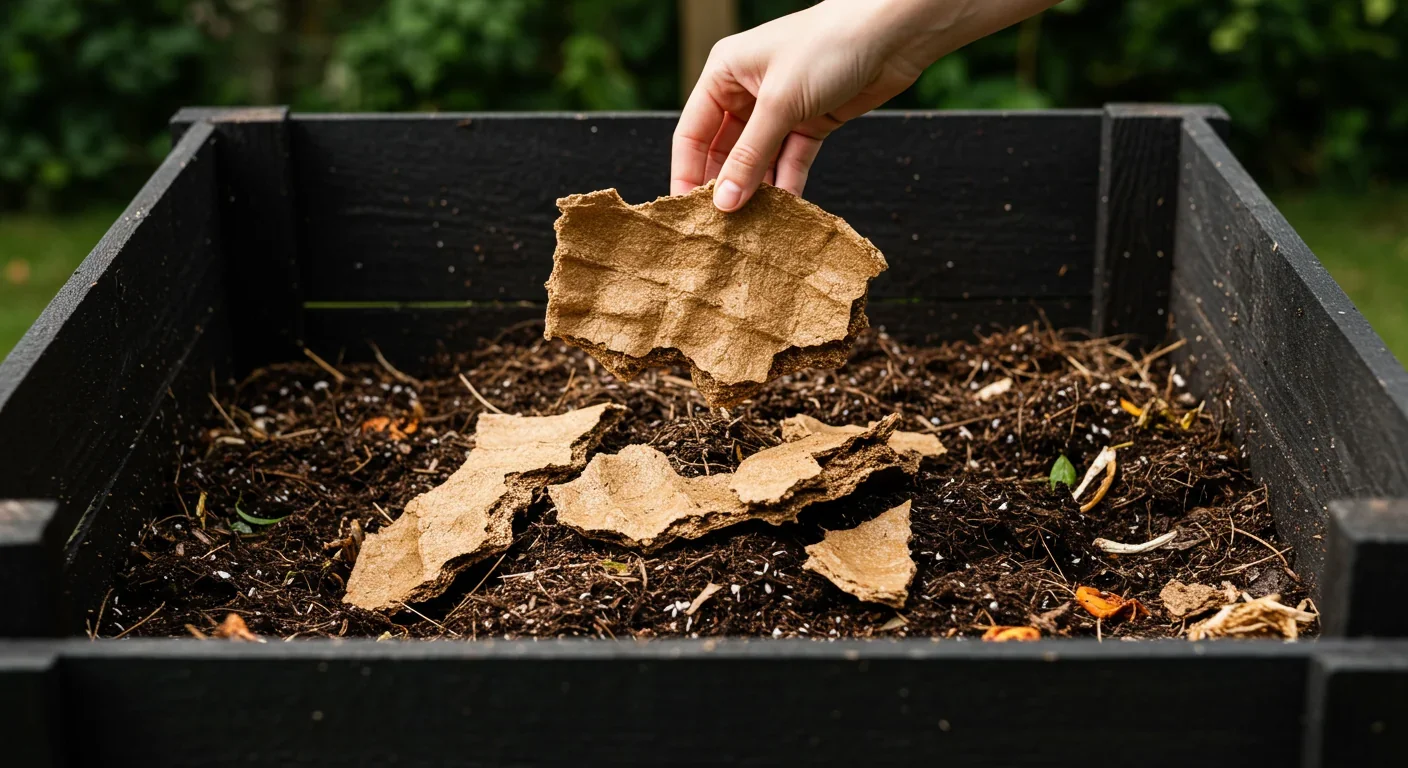
For all its environmental appeal, mycelium packaging faces hard economic questions. Can it compete on price with materials that benefit from decades of optimization and enormous economies of scale? The answer depends on who you ask and what metrics you prioritize.
Polystyrene foam is cheap, typically costing a few cents per cubic foot. Mycelium packaging currently costs more, though exact figures vary by producer and application. Ecovative's MyoComposite products target price parity with conventional alternatives for specific use cases, such as protective cushions for electronics. For simpler applications like packing peanuts, the economics remain challenging.
Production speed offers a potential advantage. Mycelium grows in five to ten days, faster than the weeks or months required to manufacture and distribute foam packaging from centralized facilities. Distributed production further reduces lead times since brands can source packaging from regional growers rather than waiting for overseas shipments. This responsiveness appeals to companies managing just-in-time supply chains.
Labor costs, however, cut the other way. Automated foam production requires minimal human intervention once equipment is running. Mycelium production involves more hands-on work: inoculating substrates, monitoring growth conditions, inspecting for contamination, and demolding finished products. As wages rise, this labor intensity could limit profitability unless automation improves.
Regulatory compliance adds complexity. While mycelium packaging is generally recognized as safe and biodegradable, it still must meet food-contact regulations in markets where it touches consumables. Testing and certification require time and money, barriers that favor established players with deep pockets.
Market projections suggest growth ahead. Industry analyses estimate the global mycelium-based packaging market could reach hundreds of millions of dollars by the early 2030s, driven by corporate sustainability commitments and consumer preferences. That's substantial, but it still represents a fraction of the overall packaging market, which totals in the hundreds of billions annually.
Scaling mycelium packaging from niche product to mainstream replacement faces obstacles beyond economics. Technical challenges remain unsolved, supply chains need development, and consumer perceptions vary widely.
One persistent issue is performance consistency. Because mycelium is a living organism, small variations in temperature, humidity, or substrate quality can produce materials with different mechanical properties. Research shows that the amount of mycelium required for stable composites depends heavily on fungus-substrate pairing. A batch grown with slightly different conditions might come out softer or denser than intended, creating quality control headaches for brands that demand uniformity.
Contamination risk poses another concern. High water content substrates, which often produce the best composites, also attract unwanted molds and bacteria. Once contamination sets in, an entire production batch can be ruined. Preventing this requires sterile handling and controlled environments, adding cost and complexity.
Durability in certain conditions limits applications. Mycelium packaging is water-resistant to a degree, but prolonged exposure to moisture can trigger decomposition. That makes it unsuitable for products shipped across oceans in humid cargo holds or stored in damp warehouses. For companies with global supply chains, this constraint is significant. As one analysis noted, the material's rapid decomposition, while environmentally desirable, isn't ideal for long-distance shipping.
Substrate availability could become a bottleneck. As demand grows, will there be enough agricultural waste to supply the industry? Hemp cultivation remains limited in many regions due to regulatory restrictions. Sawdust supplies are tied to timber production, which fluctuates with construction demand. Spent brewer's grains are abundant near breweries but may require costly transportation to growing facilities elsewhere. Building a reliable, scalable substrate supply chain will require strategic planning.
Consumer education presents a subtler challenge. Many people have never heard of mycelium packaging, and those who have may not understand how it works. Will customers trust a material that looks and feels different from what they're used to? Early adopters embrace the novelty, but mainstream acceptance requires overcoming skepticism. Brands using mycelium packaging need clear labeling and communication strategies to explain the benefits without sounding preachy.
Finally, there's competition from other sustainable packaging innovations. Bio-based plastics, recycled cardboard, seaweed films, and other alternatives are all vying for market share. Mycelium packaging is one solution among many, and its ultimate success depends on how well it performs relative to those other options in real-world conditions.
Predicting where mycelium packaging goes next requires looking at adjacent innovations and emerging trends. The technology isn't standing still. Researchers are exploring ways to enhance performance, expand applications, and integrate mycelium into broader material systems.
One promising direction is hybrid materials. Recent studies have combined mycelium with biopolymers, creating composites that blend the sustainability of fungus with the flexibility or strength of plant-derived plastics. These hybrids could unlock applications where pure mycelium falls short, such as flexible films to replace plastic wrap.
Engineered mycelium represents another frontier. Genetic modification and selective breeding can produce fungal strains optimized for specific substrates or mechanical properties. Academic research is investigating how to tailor hyphal architecture at the molecular level, potentially yielding materials with tunable properties that rival synthetic polymers.
The construction industry is eyeing mycelium for uses beyond packaging. Mycelium-based thermal insulation panels could replace fiberglass or foam boards in buildings. Acoustic panels, decorative laminates, and even structural components are under development. If mycelium proves viable in construction, the scale of production could dwarf current packaging volumes, driving down costs through economies of scale.
Edible packaging offers a futuristic twist. Some researchers are exploring mycelium films that are safe to eat, eliminating waste entirely. Advances in edible packaging suggest that thin mycelium sheets could wrap food items, dissolving during cooking or harmlessly passing through the digestive system. This is still experimental, but it hints at possibilities that radically reimagine what packaging can be.
Startups are proliferating. Fungi-focused companies are tackling everything from mycelium leather to protein production, creating an ecosystem of innovation that could accelerate progress across sectors. Magical Mushroom Company in the UK, Grown.bio in the Netherlands, and others are developing proprietary strains and processes, each betting on a different aspect of the technology.
Policy support could accelerate adoption. Several governments are considering bans or taxes on single-use plastics, creating regulatory tailwinds for alternatives like mycelium. The European Union's push toward circular economies includes incentives for bio-based materials, and similar initiatives are emerging in Asia and North America. If regulations tighten, brands will need sustainable packaging options, and mycelium will be among the front-runners.
Consumer attitudes matter enormously. Surveys suggest that younger generations prioritize sustainability when making purchasing decisions, and they're willing to pay modest premiums for eco-friendly products. As these demographics gain buying power, demand for materials like mycelium packaging will likely grow.
Whether you're a business owner evaluating packaging options, a consumer trying to reduce your environmental footprint, or simply someone curious about where technology is headed, mycelium packaging offers tangible lessons about how innovation happens.
For businesses, the message is clear: sustainable packaging is transitioning from niche to necessity. Brands that adopt it early can differentiate themselves, build customer loyalty, and future-proof their supply chains against regulatory changes. The upfront investment may be higher, but the long-term benefits, both reputational and operational, could outweigh the costs.
For consumers, mycelium packaging is a reminder that your choices shape markets. When you support companies using sustainable materials, you signal demand that drives further innovation. When you compost that mushroom-based cushion instead of tossing it in the trash, you complete the cycle the material was designed for.
More broadly, mycelium packaging illustrates how nature-based solutions can address human-made problems. We've spent decades engineering synthetic materials to meet our needs, often at great environmental cost. Now we're learning to partner with organisms that have spent millions of years evolving to do exactly what we need: break down organic matter and build structures. That shift in mindset, from domination to collaboration, could influence how we approach challenges far beyond packaging.
The fungi among us are reshaping an industry quietly but persistently, one box at a time. And if the trajectory holds, the packaging protecting your purchases a decade from now won't just be biodegradable. It will be alive, at least until it arrives at your door.

Wormholes collapse instantly because they require exotic matter with negative energy that doesn't exist in useful quantities, and quantum instabilities destroy them faster than light can cross their throats, making spacetime shortcuts a physics impossibility.

Scientific studies reveal electromagnetic hypersensitivity sufferers experience genuine symptoms but cannot detect EMF exposure better than chance, pointing to the nocebo effect rather than electromagnetic fields as the primary cause.

Mycelium packaging grows from agricultural waste in days, decomposes in weeks, and is already shipping in Dell computers and IKEA furniture—proving fungi can replace foam.

Our attraction to impractical partners stems from evolutionary signals, attachment patterns formed in childhood, and modern status pressures. Understanding these forces helps us make conscious choices aligned with long-term happiness rather than hardwired instincts.
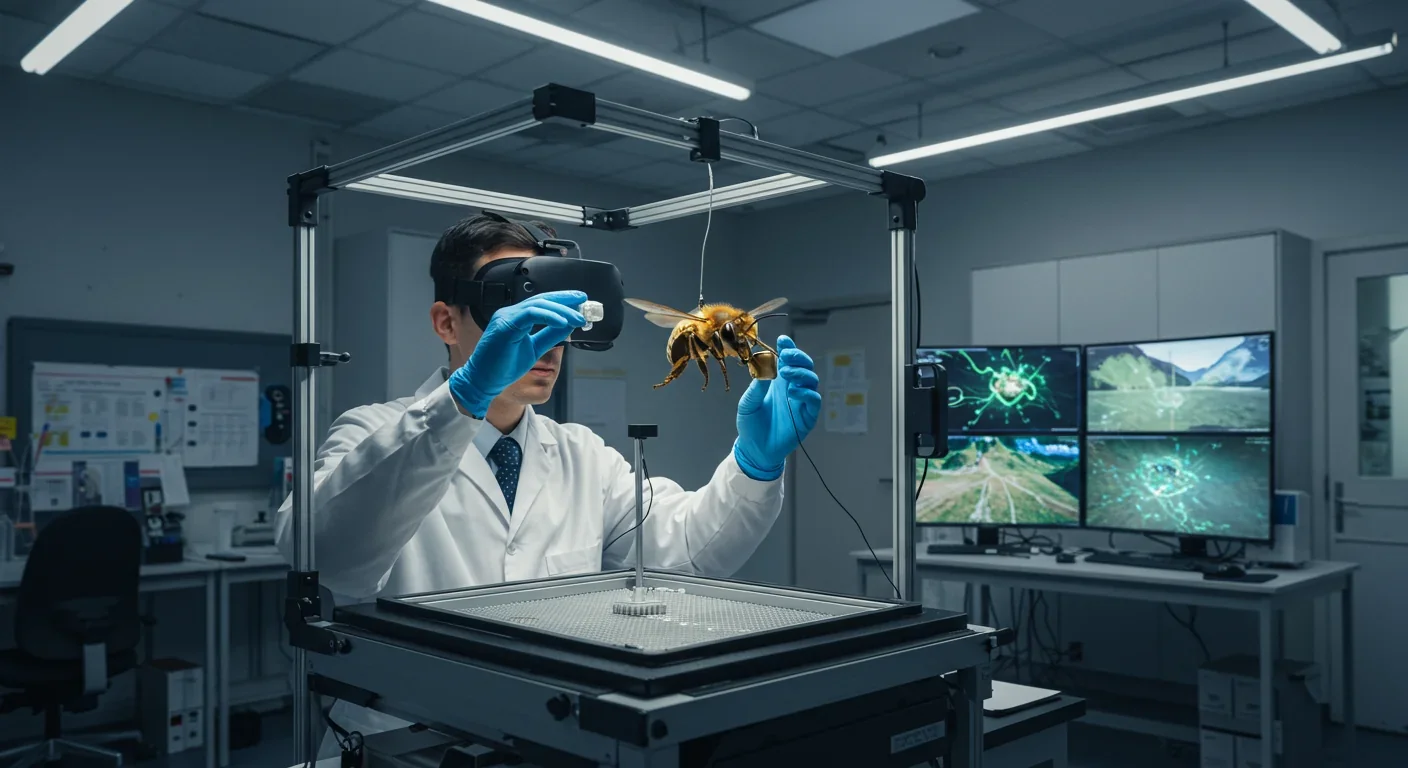
Virtual reality experiments are revealing how honeybees form sophisticated cognitive maps with brains smaller than sesame seeds, revolutionizing our understanding of intelligence and inspiring energy-efficient robots while guiding pollinator conservation.
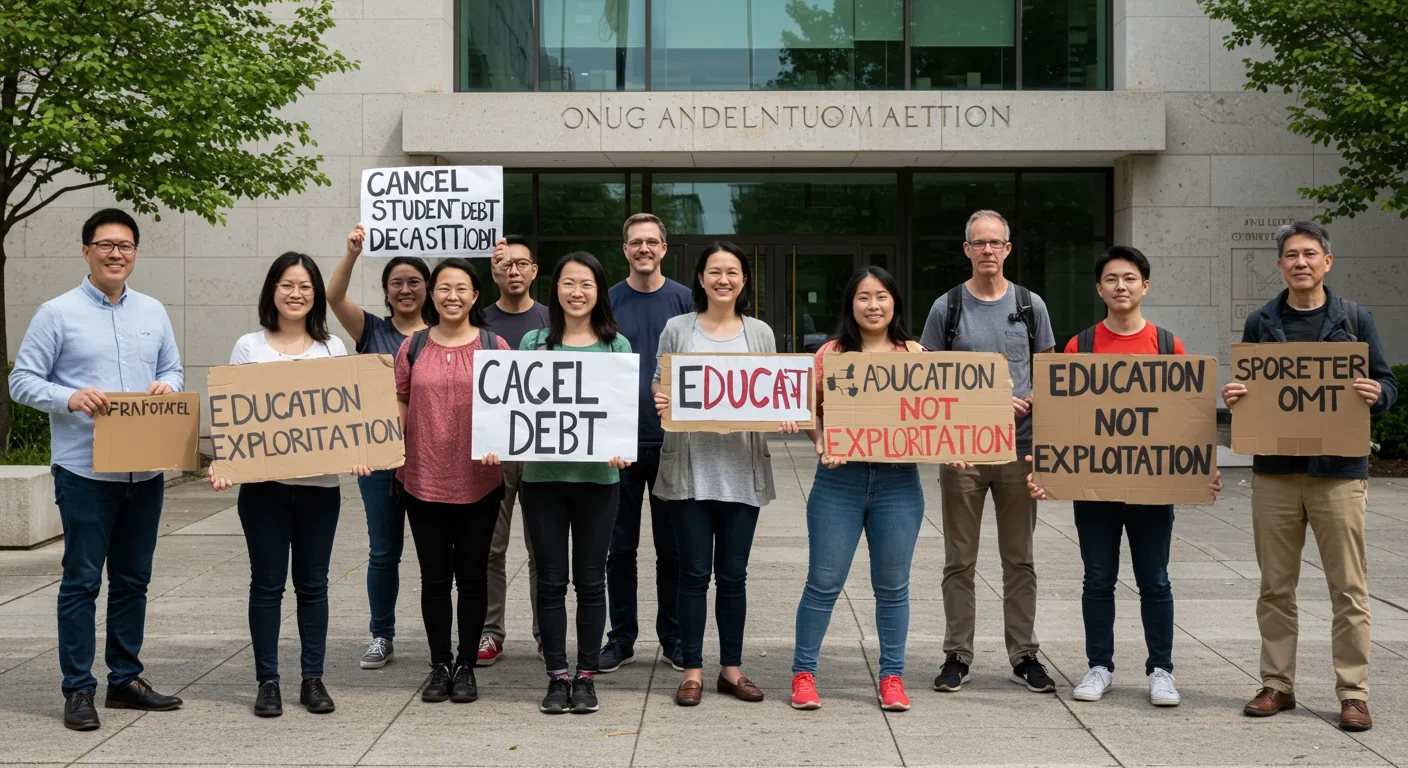
Millions of student loan borrowers are refusing to repay as an organized protest against a $1.77 trillion debt system they view as exploitative. With one in three borrowers at risk of default by 2025, this movement challenges whether the entire higher education financing model can survive.

Blockchain-based social networks like Bluesky, Mastodon, and Lens Protocol are growing rapidly, offering user data ownership and censorship resistance. While they won't immediately replace Facebook or Twitter, their 51% annual growth rate and new economic models could force Big Tech to fundamentally change how social media works.